Miniature Food Crafts: Playful Crafts for Kids
Welcome to the whimsical world of miniature food crafts, where creativity knows no bounds! If you're looking for a fun and engaging way to inspire your child's imagination, you've come to the right place. These delightful projects not only offer a chance to create tiny culinary wonders but also help in developing essential skills. Imagine your little one crafting their own miniature cupcakes, cookies, or even savory dishes like pizzas and burgers—all while enhancing their fine motor skills and attention to detail. Isn’t that a tasty way to learn?
Miniature food crafts are more than just play; they are a fantastic blend of art and creativity that allows kids to explore their baking fantasies without the mess of a real kitchen. Picture this: your child sculpting a perfect little cupcake, complete with colorful frosting and sprinkles, or assembling a tiny burger with all the fixings. The joy on their face as they create these adorable treats is priceless! Plus, these crafts encourage patience and focus, providing a wonderful opportunity for children to express themselves artistically.
Why stop at just making desserts? The world of miniature food is vast and varied, offering endless possibilities for imaginative play. From crafting tiny pizzas topped with miniature pepperoni to creating delightful cookies that look good enough to eat, the options are as limitless as your child's imagination. And the best part? These crafts can be enjoyed alone or as a fun group activity, making them perfect for playdates or family bonding time.
In this article, we will explore the benefits of miniature food crafts, the essential materials you’ll need, and provide you with simple yet creative projects that your kids will love. So, roll up your sleeves, gather your supplies, and get ready to dive into a world of fun and creativity that will leave your little chefs beaming with pride!
Engaging in miniature food crafts is not just about having fun; it comes with a treasure trove of benefits! Here are some of the key advantages:
- Promotes Creativity: Children can unleash their imagination by designing their own unique food items.
- Enhances Fine Motor Skills: Working with small materials helps develop hand-eye coordination and dexterity.
- Encourages Imaginative Play: Kids can create their own stories and scenarios around the food they make.
- Teaches Patience: Crafting tiny foods requires time and attention, helping kids learn the value of patience.
These benefits make miniature food crafts an excellent choice for parents looking to combine fun with learning. Plus, kids will love the end result—their very own creations that they can proudly display or use in their imaginative play!
Before diving into the world of miniature food crafts, it’s essential to gather the right materials. Here’s a quick list of what you’ll need:
- Polymer Clay: This versatile material is perfect for sculpting tiny food items.
- Acrylic Paint: Use this to add realistic colors and details to your creations.
- Tools: Get some basic crafting tools like sculpting tools, paintbrushes, and a rolling pin.
- Glaze: A clear glaze can add a shiny finish to your food crafts, making them look even more appetizing.
Having these materials ready will set the stage for a successful crafting experience. Remember, the goal is to have fun and let creativity flow, so don’t stress about perfection!
Now that you’re equipped with the essentials, let’s dive into some delightful projects! Kids will be thrilled to create their own miniature desserts like cupcakes and cookies. These projects not only provide a sense of accomplishment but also allow for a bit of culinary exploration.
To create adorable miniature cupcakes, start by rolling small balls of polymer clay in your desired colors for the base and frosting. Follow these simple steps:
- Shape a small ball for the cupcake base.
- Roll out a smaller piece for the frosting and shape it to fit on top.
- Add tiny details like sprinkles or cherries using small bits of clay.
- Bake according to the polymer clay instructions and let cool.
Voila! Your little one now has a batch of tiny, colorful cupcakes to show off!
Next up, let’s tackle miniature cookies! These are easy and fun to make. Start by rolling out a thin layer of clay and cutting out circles for cookies. Here’s how:
- Use a cookie cutter or a small round object to cut out cookie shapes.
- Texture the surface using a toothpick to mimic chocolate chips or sprinkles.
- Bake and let cool to reveal your scrumptious-looking cookies!
With just a little imagination, these tiny cookies can look incredibly realistic!
Let’s not forget about savory foods! Kids can also create miniature versions of their favorite dishes, which can be just as fun as desserts. Imagine the joy of crafting tiny pizzas and burgers!
Kids will love the opportunity to make their own miniature pizzas! Start with a small circle of clay for the crust and add toppings. Here’s how:
- Shape a small circle for the pizza base.
- Roll out small pieces of clay for toppings like cheese, pepperoni, and veggies.
- Assemble your toppings on the base and bake.
These colorful, tiny pizzas are sure to be a hit!
Lastly, let’s assemble some charming miniature burgers! This project allows for endless customization. Follow these steps:
- Create a small round base for the burger bun.
- Add a patty using brown clay and layer with toppings like lettuce and cheese.
- Finish with another bun on top and bake.
Your kids can create their dream burgers, complete with all their favorite toppings!
Once the crafting is done, showcasing these tiny masterpieces can be just as exciting! Here are a few creative display ideas:
- Shadow Boxes: Create a mini kitchen scene using shadow boxes to display the crafts.
- Miniature Plates: Arrange the food on tiny plates for a realistic touch.
- Craft Stands: Use small stands to elevate the creations and make them more visible.
Displaying these crafts allows kids to take pride in their work and adds a decorative touch to their rooms!
Q: What age is appropriate for miniature food crafts?
A: Miniature food crafts can be suitable for children aged 6 and up, with adult supervision for younger kids, especially when using tools or baking.
Q: Can I use regular clay instead of polymer clay?
A: While you can use regular clay, polymer clay is preferred as it hardens when baked, ensuring your creations last longer.
Q: How can we make the crafting experience more educational?
A: Incorporate lessons on measurements, colors, and even food groups while crafting to enhance the learning experience.
Q: Are there any safety tips for crafting with kids?
A: Always supervise children when using tools and ensure they understand the importance of not eating any of the materials used.
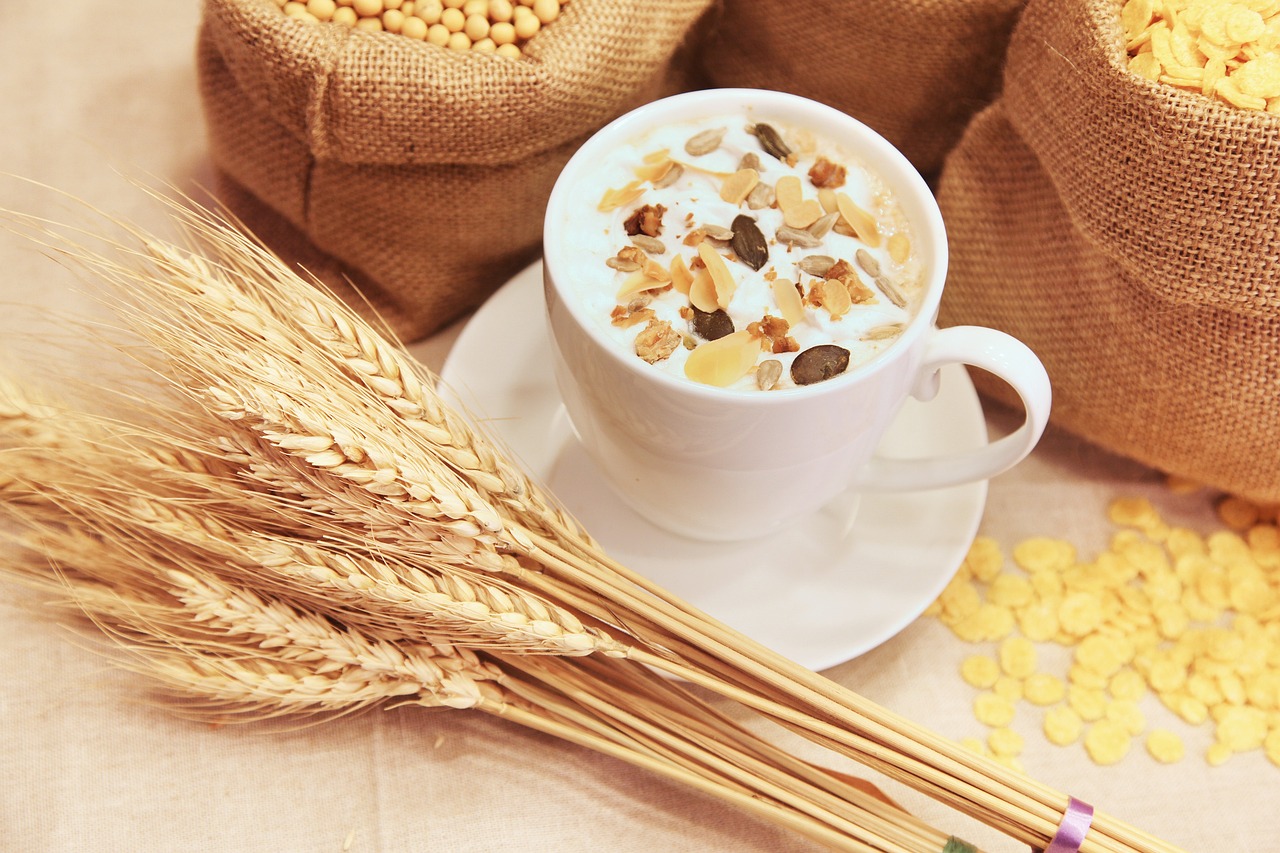
Benefits of Miniature Food Crafts
Engaging in miniature food crafts is not just a fun pastime; it offers a treasure trove of benefits for children. First and foremost, these delightful projects spark creativity. Imagine your child transforming a lump of polymer clay into a tiny cupcake or a miniature burger! This hands-on experience allows kids to experiment with colors, shapes, and textures, giving them the freedom to express themselves artistically.
Moreover, miniature food crafts are excellent for enhancing fine motor skills. As children manipulate small pieces of clay, paint tiny details, and assemble miniature dishes, they are honing their dexterity and hand-eye coordination. These skills are crucial not only for crafting but also for everyday tasks like writing and buttoning shirts. It's like a fun workout for their little fingers!
Another significant benefit is the development of patience and attention to detail. Crafting miniature food requires concentration and a careful approach. Children learn to take their time, ensuring that each tiny detail is just right. This process cultivates a sense of accomplishment when they finally see their creations come to life. It's akin to a chef perfecting a recipe—every step matters!
Furthermore, these crafts encourage imaginative play. Once the miniature foods are complete, children can engage in pretend play, creating their own little restaurants or tea parties. This imaginative scenario not only entertains them but also helps develop social skills as they share their creations with friends or family. Picture a group of kids gathered around, pretending to serve each other tiny meals—it's a recipe for joy!
To summarize, the benefits of miniature food crafts include:
- Creativity: Encourages artistic expression.
- Fine Motor Skills: Enhances dexterity and coordination.
- Patience: Teaches children to focus on details.
- Imaginative Play: Fosters social skills and creativity.
In essence, miniature food crafts are not just about creating adorable tiny treats; they are a gateway to learning and development. So, gather those materials and let your child dive into the whimsical world of miniatures!
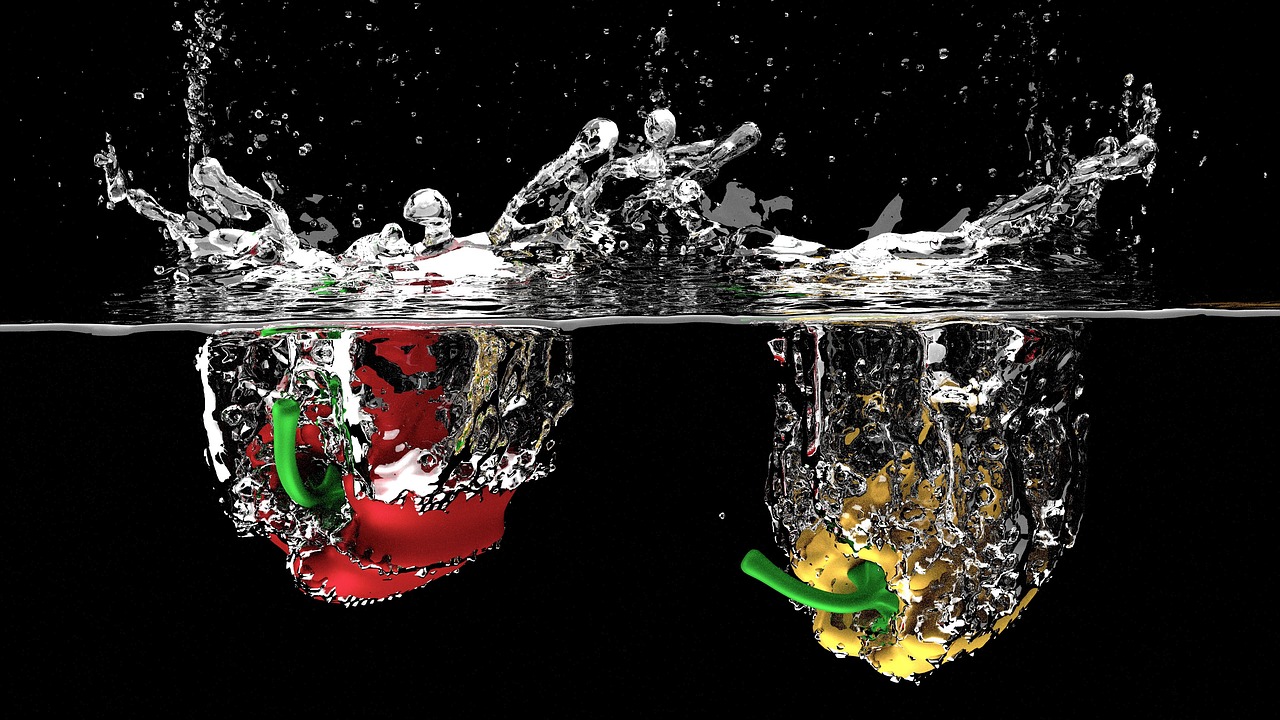
Essential Materials Needed
Before diving into the enchanting world of miniature food crafts, it's crucial to gather the essential materials that will set the stage for creativity and fun. Think of this as your crafting toolkit, where each item plays a vital role in bringing your tiny culinary dreams to life. The primary material you'll need is polymer clay, which comes in a variety of colors and can be easily molded into any shape you desire. This versatile medium is perfect for creating everything from cupcakes to burgers, allowing kids to unleash their imagination.
In addition to polymer clay, you'll also want to have some acrylic paints on hand. These paints are fantastic for adding realistic details and vibrant colors to your miniature creations. Imagine painting tiny sprinkles on a cupcake or the sesame seeds on a burger bun! To apply these paints, a set of fine-tipped paintbrushes is essential. They will help kids get into those intricate areas, making their food crafts look even more realistic.
Another important tool is a set of sculpting tools. These can range from simple household items like toothpicks and knives to specialized clay tools that help shape and detail the food items. A cutting mat or a clean work surface is also recommended to protect your tables and make cleanup easier. When it comes to finishing touches, a glossy varnish can be used to give your miniature foods a delightful shine, mimicking the look of freshly made treats.
For those looking to add a touch of realism, consider gathering some accessories like miniature plates, utensils, and display stands. These items can elevate the presentation of your crafts, turning them into delightful displays that can be admired by family and friends. To summarize, here’s a quick look at the essential materials needed:
| Material | Purpose |
|---|---|
| Polymer Clay | Main material for crafting |
| Acrylic Paints | For adding color and details |
| Fine-tipped Paintbrushes | For precise painting |
| Sculpting Tools | For shaping and detailing |
| Cutting Mat | To protect surfaces |
| Glossy Varnish | For a shiny finish |
| Miniature Accessories | For display purposes |
By gathering these materials, you're setting your young crafters up for a successful and enjoyable crafting experience. Each item serves a purpose, igniting their creativity while enhancing their fine motor skills. So, let’s get crafting and watch as their miniature food masterpieces come to life!
Q: What age group is suitable for miniature food crafts?
A: Miniature food crafts are suitable for children aged 5 and up, with adult supervision recommended for younger kids, especially when using tools.
Q: Can I use regular clay instead of polymer clay?
A: While you can use regular clay, polymer clay is preferred because it hardens when baked, making your creations durable and long-lasting.
Q: How do I store my miniature food crafts?
A: Store your completed crafts in a cool, dry place, preferably in a display case or box to protect them from dust and damage.
Q: Are there any safety tips for using acrylic paints?
A: Always use non-toxic acrylic paints and ensure good ventilation while painting. It's also a good idea to have kids wear old clothes or an apron to prevent stains.

Simple Miniature Desserts
Creating miniature desserts like cupcakes and cookies is not just an activity; it’s a delightful journey into the world of tiny treats that can ignite a child’s imagination. Imagine your little one sculpting a tiny cupcake, complete with a swirl of frosting that looks almost too good to eat! This is not only a fun project but also a way to explore their baking fantasies without the mess of a real kitchen. The joy of crafting these tiny delicacies can lead to hours of imaginative play, where each creation tells a story of its own.
To get started, gather your materials: polymer clay, some vibrant paints, and a few essential tools like sculpting tools and a rolling pin. The beauty of miniature food crafts lies in their simplicity; even a child can create something that looks professionally made with just a little guidance. For instance, when making cupcakes, children can experiment with different colors and toppings, allowing their creativity to shine through. They can choose to make a classic vanilla cupcake or a vibrant red velvet one, topped with sprinkles or a cherry. The options are endless!
Let's take a closer look at two popular miniature dessert projects that are sure to be a hit:
To sculpt adorable miniature cupcakes, start by rolling a small ball of polymer clay for the base. Once you have your base, roll another smaller ball for the frosting. Kids can use their fingers or tools to create swirls, peaks, and even add tiny details like chocolate chips or fruit slices on top. The key here is to encourage them to experiment with colors and textures. For example, a sprinkle of glitter can turn a simple cupcake into a magical treat!
Now, let’s move on to those tiny cookies that look good enough to eat! Begin by flattening small pieces of clay into cookie shapes. Children can create classic round cookies, or get creative with fun shapes like hearts or stars. Adding realistic details is where the magic happens—kids can use a toothpick to etch in chocolate chip patterns or even create icing designs with a different color of clay. The satisfaction of seeing their creations come to life will boost their confidence and inspire them to keep crafting!
In summary, these miniature dessert crafts are not just about making tiny food; they are about fostering creativity, enhancing fine motor skills, and providing a canvas for imaginative play. As children engage in these projects, they learn patience and attention to detail, skills that are valuable beyond the crafting table. So, gather your supplies, let your kids’ imaginations run wild, and watch as they create their own little world of miniature desserts!
Q: What age is appropriate for kids to start making miniature food crafts?
A: Generally, children aged 5 and up can enjoy miniature food crafts with supervision. Younger children may need assistance with certain tools.
Q: What type of clay is best for miniature food crafts?
A: Polymer clay is highly recommended as it is easy to mold and can be baked to harden, making it perfect for creating long-lasting miniature food items.
Q: How can I display the miniature food crafts once they're completed?
A: Consider using a small decorative plate or a glass display case. You can also create a mini café setup using dollhouse furniture for a fun presentation!

Making Miniature Cupcakes
Creating miniature cupcakes is not just a fun activity; it’s a delightful journey into the world of baking with a twist! Imagine the joy on your child’s face as they sculpt their very own tiny treats, each one bursting with color and personality. To start this charming adventure, gather your supplies, which include polymer clay in various colors, a small rolling pin, and some sculpting tools. These tools will help in shaping and detailing the cupcakes, making the process not only enjoyable but also a fantastic way to enhance their fine motor skills.
Begin by rolling out a small piece of clay into a ball; this will serve as the base of your cupcake. Next, flatten the top slightly to create that classic cupcake shape. Now, the real fun begins! Choose a color for the frosting—perhaps a vibrant pink or a creamy white—and roll another piece of clay into a snake-like shape. Twist and turn this clay to mimic the swirled frosting that we all know and love. Carefully place it on top of your cupcake base, allowing it to drape over the edges for that delightful, decadent look. Remember, the beauty of crafting is in the details, so don't hesitate to add sprinkles or tiny decorations made from even smaller bits of clay!
Once the cupcakes are assembled, it’s time to bake them according to the instructions for the polymer clay you’re using. This step is crucial as it solidifies their form and brings your child’s creations to life. After they cool, kids can paint on additional details, such as shiny glaze or colorful sprinkles, using acrylic paints. This not only adds realism but also allows them to express their creativity further. Imagine a mini cupcake adorned with rainbow sprinkles and a cherry on top—how adorable!
Finally, consider setting up a mini cupcake display at home. You can create a small cardboard stand where these delicious-looking creations can be showcased. This not only gives your child a sense of accomplishment but also encourages them to share their work with family and friends, fostering a sense of pride in their craft. So, grab those tools and let the cupcake-making magic begin!
Q: What age is suitable for kids to start making miniature cupcakes?
A: Children aged 6 and up can enjoy this activity with supervision. Younger kids can participate with help from an adult.
Q: Can I use regular clay instead of polymer clay?
A: Regular clay is not recommended since it does not harden like polymer clay. Polymer clay is specifically designed for crafting and will hold its shape once baked.
Q: How can I ensure my child stays safe while crafting?
A: Always supervise children during crafting, especially when using tools. Teach them to handle materials carefully and to wash their hands afterward.
Q: What other decorations can we use for the cupcakes?
A: Besides clay, you can use beads, sequins, or even tiny paper cutouts to embellish the cupcakes, allowing for even more creativity!
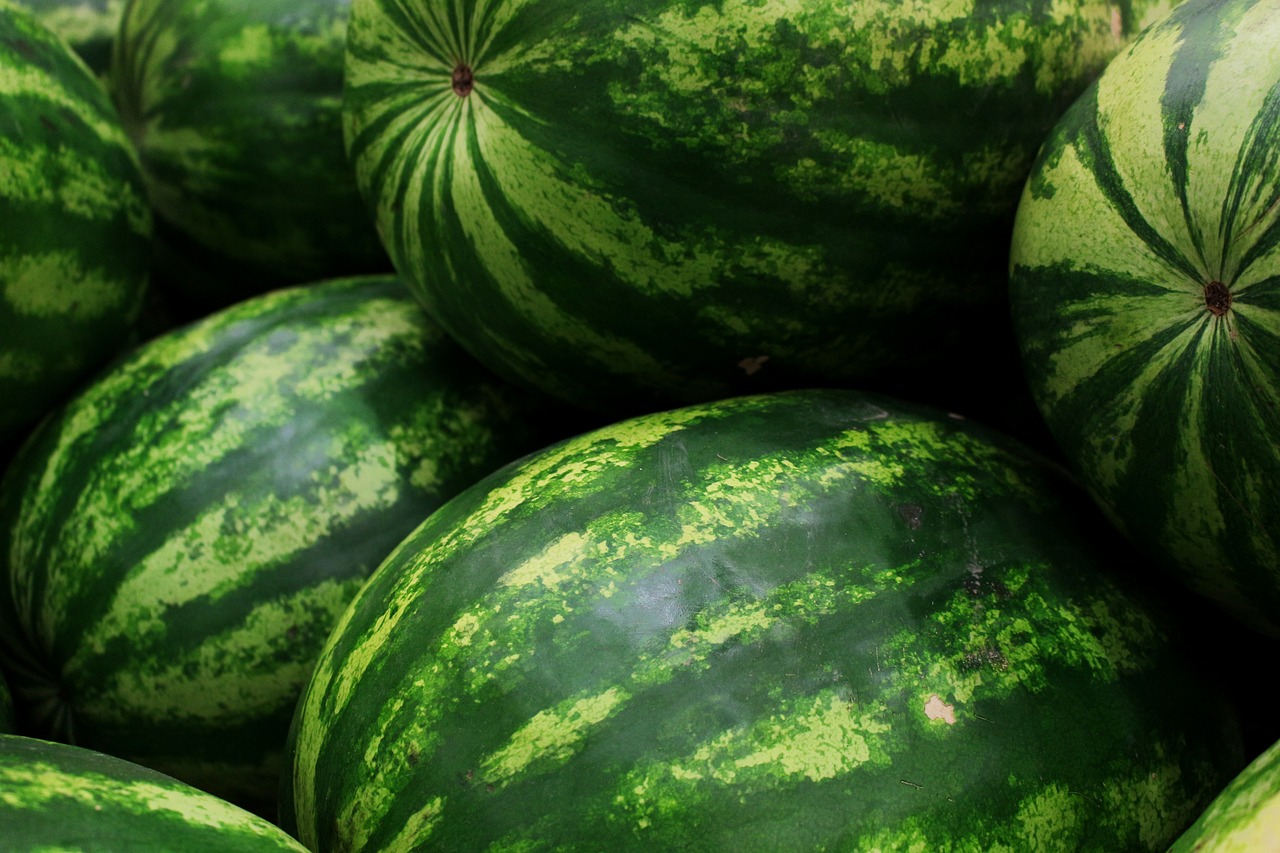
Crafting Miniature Cookies
Creating miniature cookies is not just a delightful activity for kids; it’s an adventure that sparks their imagination and hones their fine motor skills. Imagine the joy on a child's face as they sculpt tiny treats that look almost good enough to eat! With a little guidance and some basic materials, your little ones can embark on a culinary journey where they can explore flavors and designs without any mess in the kitchen.
To get started, gather some essential supplies. You'll need polymer clay in various colors, a rolling pin, cookie cutters in fun shapes, and a few tools for adding details like sprinkles or chocolate chips. The beauty of miniature cookie crafting is that there are no strict rules; children can let their creativity run wild. They can mix colors, create unique shapes, and even invent their own cookie flavors!
Here’s a simple process to help your kids craft their own miniature cookies:
- Choose Your Colors: Start by selecting the colors of polymer clay that will represent the cookie base and toppings. For example, a light brown for chocolate chip cookies or vibrant colors for frosted cookies.
- Sculpt the Cookie Base: Roll a small piece of the clay into a ball, then flatten it gently to create the cookie shape. This is where kids can practice their rolling and flattening skills!
- Add Toppings: Use tiny bits of different colored clay to create chocolate chips, sprinkles, or icing. Encourage your child to experiment with different designs—maybe a cookie with a smiley face or a heart-shaped cookie for a loved one!
- Bake or Air Dry: Once the cookies are crafted, follow the instructions for the polymer clay to either bake them in the oven or let them air dry. This step is crucial, as it transforms their creations into durable keepsakes.
After the cookies have cooled, kids can take pride in their creations, displaying them in a fun way. They can set up a miniature bakery scene, complete with tiny trays or boxes, allowing them to engage in imaginative play. This can lead to storytelling sessions where they can create adventures around their tiny baked goods, enhancing their creative thinking skills.
Remember, the goal of crafting miniature cookies is not just about the end product, but the joy of the process itself. Encourage your children to share their creations with family and friends, fostering a sense of accomplishment and pride in their artistic abilities. Plus, who wouldn't love a plate full of adorable, tiny cookies?
- What age is appropriate for miniature cookie crafting? Miniature cookie crafting is suitable for children aged 5 and up, with adult supervision recommended for younger kids, especially during the baking process.
- Can we eat the miniature cookies? No, the cookies made from polymer clay are not edible. However, they can be a fun way to explore baking concepts without the mess!
- How do I store the finished miniature cookies? Once baked or air-dried, store them in a cool, dry place. A small display case can keep them safe while showcasing your child's hard work.
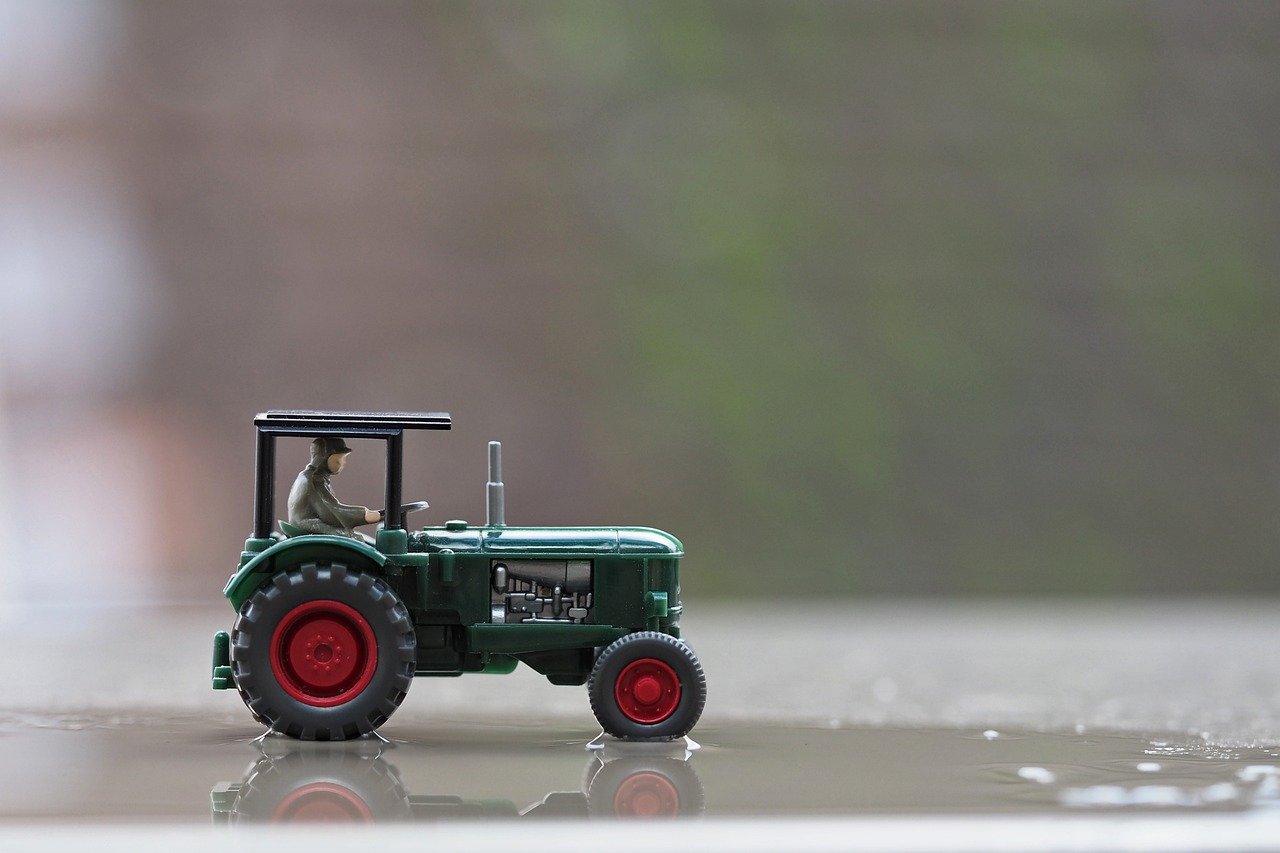
Miniature Savory Foods
When it comes to the world of miniature food crafts, the fun doesn't stop at sweet treats! offer an exciting avenue for kids to unleash their creativity while exploring their favorite dishes in a tiny form. Imagine the joy of crafting a miniature pizza or a charming little burger, complete with all the toppings! Not only do these projects spark imagination, but they also encourage children to engage in role-playing scenarios that can help develop their social skills.
Creating miniature savory foods is like stepping into a culinary adventure where the possibilities are endless. For instance, when making tiny pizzas, kids can experiment with various toppings, from pepperoni to colorful vegetables, allowing them to express their individual tastes. The tactile experience of molding and decorating these mini dishes is not only fun but also enhances fine motor skills, as children learn to manipulate the materials with precision.
As they embark on these savory crafting projects, children can learn valuable lessons about food assembly and presentation. It’s fascinating to see how they can transform simple materials into mouth-watering creations that look almost good enough to eat! Plus, the vibrant colors and textures of the miniature foods can stimulate their senses and inspire further creativity in their playtime activities.
Let’s dive into the delightful process of making miniature pizzas! To start, you’ll need some basic materials such as polymer clay in various colors, a rolling pin, and a few small tools for detailing. Begin by rolling out a small piece of clay to form the pizza base. Kids can then use different colors of clay to create toppings, like bright red for pepperoni, green for bell peppers, and yellow for cheese. The best part? They can get as creative as they want, mixing and matching toppings to suit their tastes!
Once the pizza is assembled, kids can bake their creations according to the clay instructions. This not only solidifies their work but also gives them a sense of accomplishment as they watch their tiny pizzas transform in the oven. After cooling, these miniature pizzas can be displayed proudly on a shelf or even used in imaginative play scenarios!
Now, let’s move on to crafting adorable miniature burgers! Just like with the pizzas, the process begins with a base. Kids can roll out brown clay to create the burger bun and a patty. The fun really begins when it comes to adding toppings! Using colorful clay, they can make lettuce, tomatoes, and even pickles to layer on top of their burger. This project not only allows children to explore their culinary creativity but also teaches them about food assembly in a playful way.
Once the miniature burgers are complete, kids can showcase their delicious-looking creations. They might even set up a pretend restaurant where they can serve their tiny meals to family and friends, further enhancing their imaginative play. The joy of crafting these savory foods can lead to hours of fun, laughter, and learning!
Q: What materials do I need for miniature savory food crafts?
A: Essential materials include polymer clay, a rolling pin, sculpting tools, and paint for detailing. You can also use items like beads or buttons for added textures.
Q: Are these crafts safe for young children?
A: Yes, as long as children are supervised, and the materials used are non-toxic. Always check the packaging for safety information.
Q: How can I display the finished miniature food crafts?
A: You can use small shelves, shadow boxes, or even create a mini café scene with a dollhouse to showcase the tiny masterpieces!
Q: Can we eat the miniature food crafts?
A: No, the miniature food items made from polymer clay are not edible. They are meant for decoration and imaginative play only.
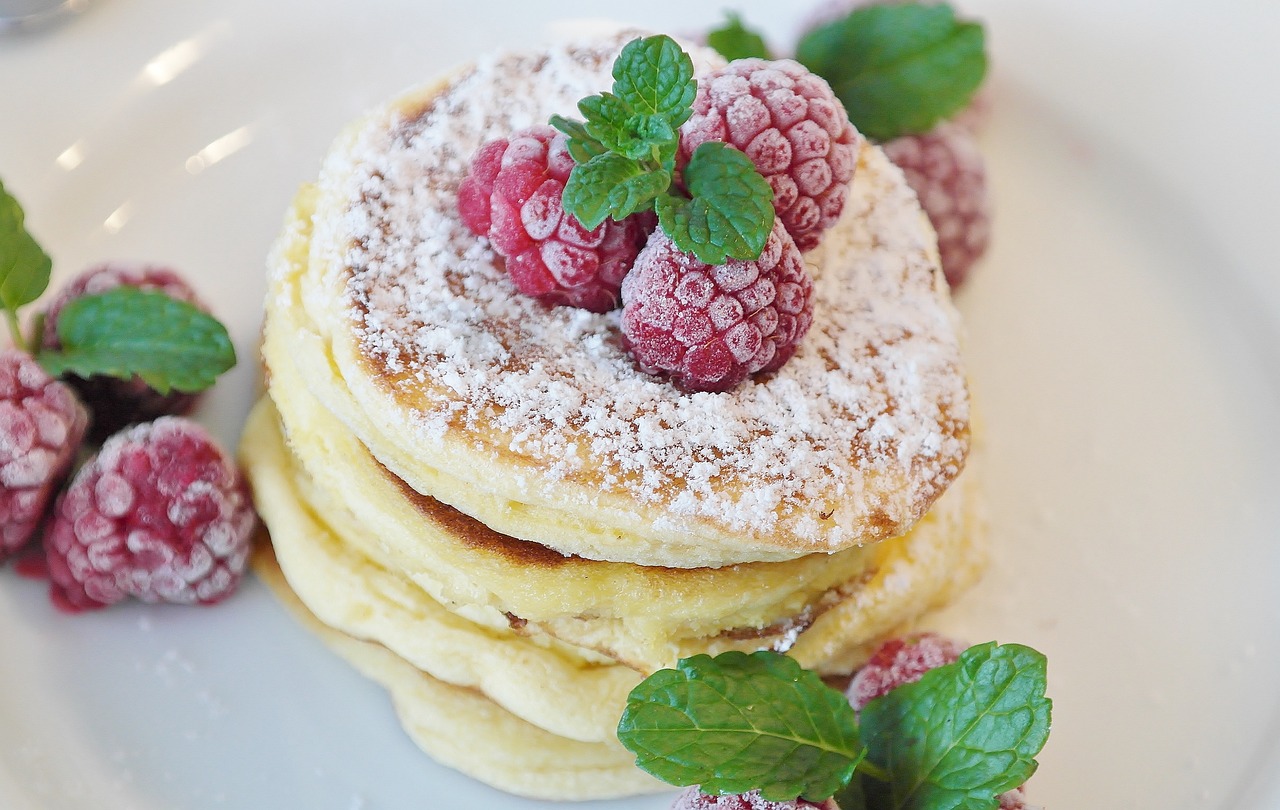
Creating Miniature Pizzas
Who doesn't love a good pizza? Now, imagine crafting your very own miniature pizzas that are not only adorable but also a fantastic way to unleash your creativity! This fun project is perfect for kids who enjoy hands-on activities and want to explore their culinary skills in a playful way. With just a few simple steps, your little ones can create their own tiny pizzas, complete with colorful toppings that look good enough to eat!
To get started, gather the necessary materials. You'll need some polymer clay in various colors to represent the pizza base, sauce, cheese, and toppings. Don't forget the tools! A small rolling pin, a knife, and some sculpting tools will help shape and detail your pizzas. Once you have everything ready, it's time to roll up your sleeves and dive into the delightful world of miniature pizza making!
Begin by shaping the base of the pizza. Take a piece of tan or light brown clay and roll it into a flat circle, about the size of a quarter. This will serve as your pizza crust. Next, add a layer of red clay for the tomato sauce. You can use your fingers to spread it evenly across the crust, making sure to leave a small edge for the crust itself. Now, for the cheese! Roll out some yellow or white clay into thin strips or small pieces and sprinkle them generously over the sauce. The more, the merrier!
Now comes the fun part—adding toppings! Get creative with your choices. You can use tiny bits of green clay for bell peppers, small round pieces for pepperoni, or even little bits of black clay for olives. The sky's the limit! As you add each topping, press them gently into the cheese to ensure they stick. Remember, the goal is to make it look as realistic as possible, so don't hesitate to add textures or layers to your toppings to give them depth.
Once your miniature pizza is assembled, it’s time to bake it according to the polymer clay instructions. This step is crucial as it hardens your creation, making it a lasting piece of art. After baking, let it cool down completely. Now, you have a charming little pizza that can be displayed or used in imaginative play scenarios!
For those looking to take this project a step further, consider creating a whole pizza party scene. You can craft miniature pizza boxes, a tiny pizza cutter, and even a miniature dining table! This not only enhances the play experience but also encourages storytelling and role-playing, which are essential for children’s development.
Here are some common questions that might pop up while creating your miniature pizzas:
- Can I use other materials besides polymer clay? Yes! While polymer clay is ideal, you can also use air-dry clay or even paper-mâché for different textures and effects.
- What if I don’t have specific colors for toppings? No worries! You can mix different clay colors to create your desired shades or use paint after baking to add details.
- How do I display my miniature pizzas? Consider using a small plate or a shadow box to showcase your creations. You can also create a miniature kitchen scene for added flair!

Making Miniature Burgers
Creating miniature burgers is not just a fun activity; it's an adventure in creativity and imagination! Kids can dive into the world of culinary arts without ever having to step into a kitchen. Imagine this: tiny, perfectly crafted burgers that are almost too cute to eat! The process of assembling these miniature delights allows children to explore their creativity while developing fine motor skills. Plus, it’s a fantastic way to bond with friends or family as they craft their little masterpieces together.
To get started, gather your materials. You'll need polymer clay in various colors to represent the burger components, such as:
- Bun: Light brown for the top and bottom of the burger.
- Patty: A darker brown to mimic a juicy beef patty.
- Cheese: Bright yellow for that ooey-gooey goodness.
- Lettuce: A vibrant green to add a fresh crunch.
- Tomato: Red for a juicy slice.
- Condiments: Optional colors like ketchup (red) and mustard (yellow).
Once you have your materials ready, it's time to sculpt! Start by rolling the clay for the bottom bun into a flat circle. Then, create a slightly smaller circle for the patty, followed by the cheese. Layer the lettuce, tomato, and any additional toppings you want. Finally, cap it off with the top bun. The beauty of miniature crafting is that there are no strict rules—kids can customize their burgers however they like!
After assembling the burger, it’s time to add some finishing touches. Kids can use tools to create texture on the patty, making it look more realistic. Adding small details like sesame seeds on the bun can elevate the whole creation. Once the crafting is done, bake the clay according to the manufacturer's instructions to set the pieces. This is where the magic happens! Watching the tiny burgers transform in the oven is always a delight.
Finally, once cooled, these miniature burgers can be displayed proudly. Consider creating a little “burger stand” using cardboard or a small tray, making it look like a real fast-food joint. This not only showcases their hard work but also sparks imaginative play. Kids can pretend to serve their friends and family, turning their crafting session into a fun role-playing experience.
Q1: Can I use other materials instead of polymer clay?
A: Absolutely! While polymer clay is ideal because it hardens when baked, you can also use air-dry clay or even craft foam for a lighter, non-bake option. Just remember that the final look and feel may differ.
Q2: How can I make my miniature burgers look more realistic?
A: Adding texture is key! Use tools to create grill marks on the patties or crinkle the lettuce for a more lifelike appearance. Painting details like ketchup or mustard can also add a realistic touch.
Q3: What age group is this activity suitable for?
A: Miniature burger crafting is great for children aged 6 and up, but younger kids can also participate with adult supervision to help with the more intricate steps.
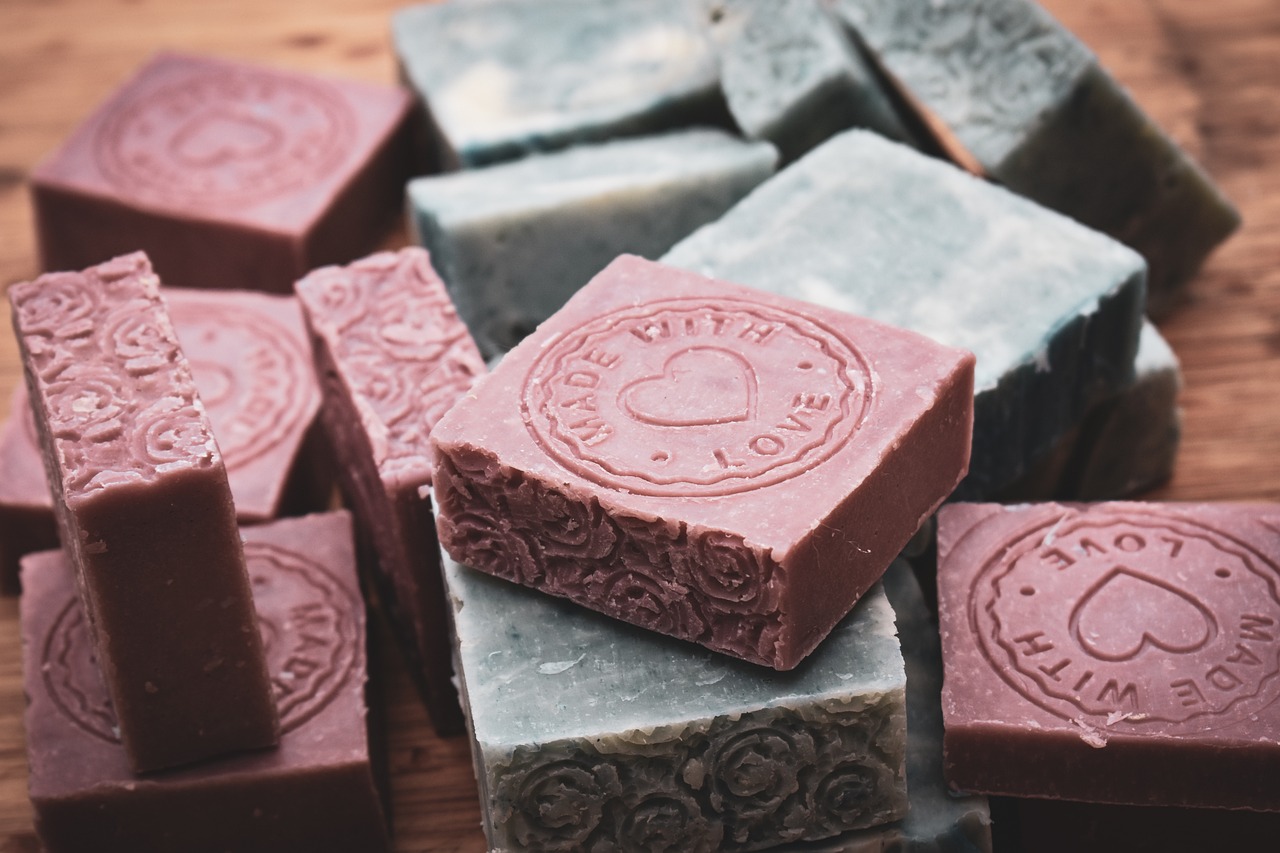
Tips for Displaying Miniature Food Crafts
Once your little ones have poured their creativity into crafting adorable miniature food items, the next exciting step is figuring out how to display these tiny treasures! Displaying miniature food crafts not only showcases their hard work but also adds a delightful touch to any space. Here are some fun and imaginative ways to present these charming creations:
First, consider using shadow boxes or small display cases. These can serve as the perfect backdrop, allowing the mini food items to shine. You can decorate the inside of the box with colorful paper or fabric to enhance the visual appeal. Imagine a tiny bakery scene where your cupcakes and cookies are the stars of the show! Additionally, using a clear case protects the crafts from dust while making them look professional and polished.
Another creative option is to use miniature plates or trays. These can be found at craft stores or even repurposed from old dollhouse accessories. Arrange the miniature foods on these plates just like a real restaurant display. You can even create themed displays, such as a breakfast platter featuring tiny pancakes and eggs, or a dessert table filled with colorful sweets. This not only makes for a beautiful presentation but also sparks imaginative play as kids can pretend to serve their creations.
For those who love a bit of whimsy, consider using hanging displays. You can attach strings to small hooks or even branches to create a mobile-like effect. This adds a playful element to the display and can be a conversation starter for guests. Just picture a tiny burger dangling from a string, inviting everyone to take a closer look!
Lastly, don’t forget about themed displays. If your child has created a variety of foods, group them into themes. For instance, you can have a “pizza party” corner with miniature pizzas, drinks, and snacks. Or, create a “dessert shop” with all the sweet treats they made. This not only organizes the display but also tells a story, making it more engaging for viewers.
To help you visualize these ideas better, here’s a quick table summarizing different display options:
| Display Option | Description |
|---|---|
| Shadow Boxes | Enclosed displays that protect and highlight miniature food crafts. |
| Miniature Plates/Trays | Realistic serving dishes that enhance the presentation of food items. |
| Hanging Displays | Whimsical arrangements that add a playful touch to the display. |
| Themed Displays | Organized groupings that tell a story or create a scene. |
In conclusion, displaying miniature food crafts is an opportunity for children to showcase their creativity and craftsmanship. Whether they choose shadow boxes, plates, hanging displays, or themes, the key is to make it fun and engaging. Encourage your kids to think outside the box and let their imaginations run wild as they present their delightful creations!
Q: What materials are best for creating miniature food crafts?
A: Polymer clay, paint, and various crafting tools are essential for creating realistic miniature food items. You can also use items like beads or fabric for added detail.
Q: Can younger children participate in miniature food crafts?
A: Absolutely! While some projects may require adult supervision, many miniature food crafts can be adapted for younger children, allowing them to explore their creativity safely.
Q: How can I preserve the miniature food crafts once they are completed?
A: To preserve your creations, consider using a clear sealant spray or placing them in display cases to protect them from dust and damage.
Q: Are there specific themes that work well for miniature food displays?
A: Yes! Popular themes include bakery shops, pizza parties, or even seasonal themes like holiday treats. The possibilities are endless!
Frequently Asked Questions
- What materials do I need to start miniature food crafts?
To dive into the delightful world of miniature food crafts, you'll need some essential materials. Gather polymer clay, acrylic paints, a variety of tools like sculpting tools and brushes, and a cutting mat. Having these supplies ready will set the stage for a fun and creative crafting experience!
- Are miniature food crafts safe for children?
Absolutely! Miniature food crafts are generally safe for kids, especially when using non-toxic materials like polymer clay. However, it's always a good idea to supervise younger children during crafting sessions, particularly when using tools or paints. This way, you can ensure a safe and enjoyable experience for everyone involved!
- Can I bake the polymer clay creations?
Yes, you can! Polymer clay is designed to be baked in an oven to harden and set your creations. Just follow the manufacturer's instructions for temperature and time. Once baked, your miniature food crafts will be durable and ready for display or play!
- How can I display my miniature food crafts?
Displaying your tiny masterpieces can be as fun as making them! Consider using clear jars, shadow boxes, or even mini display stands. You can create a themed display, like a tiny bakery or kitchen scene, to showcase your creations and let your imagination shine!
- What age group is suitable for miniature food crafts?
Miniature food crafts are perfect for a variety of age groups! While younger children (around 5 years old) can enjoy simple projects with supervision, older kids (8 years and up) can tackle more intricate designs. It's a fantastic way to inspire creativity and fine motor skills in kids of all ages!
- Can I customize my miniature food projects?
Definitely! One of the best parts about miniature food crafts is the ability to customize your creations. Kids can mix colors, add unique toppings, and even create themed foods. Let their imaginations run wild and encourage them to put their personal touch on each project!



















